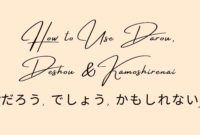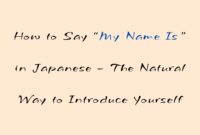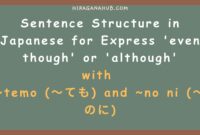How to Say “Don’t” in Japanese with ~ないでください &
~ないでちょうだい
Previously, we learned how to use ~てください to
make polite requests. Now, let’s explore how to ask someone
not to do something in Japanese.
To say “don’t (do something)”, we use the
negative form of verbs. If you’re unfamiliar with
negative conjugation, it’s best to review it first before diving into
this lesson.

1. Using ~ないでください (nai de kudasai) – Polite Negative
Requests
This structure is used to politely ask someone
not to do something.
Grammar Pattern:
✅ Negative verb form + で + ください
Examples:
-
なかないでください – nakanai de kudasai:
Please don’t cry. -
このほんをよまないでください –
kono hon o yomanai de kudasai: Please don’t read this book. -
ここでしゃしんをとらないでください –
koko de shashin o toranai de kudasai: Please don’t take
pictures here. -
にほんごで はなさないでください –
nihongo de hanasanai de kudasai: Please don’t speak in
Japanese. -
えきで たばこを すわないでください –
eki de tabako o suwanai de kudasai: Please don’t smoke at
the station.
This form is commonly used in
public signs, announcements, and formal settings.
2. Using ~ないでちょうだい (nai de choudai) – Casual Negative
Requests
Similar to ~ないでください, but this form is more
casual and often used by women.
Grammar Pattern:
✅ Negative verb form + で + ちょうだい
Examples:
-
おみやげを わすれないでちょうだいね –
omiyage o wasurenai de choudai ne: Don’t forget the
souvenir, okay? -
ここでまってないでちょうだい –
koko de mattenai de choudai: Don’t wait here. -
わたしのけいたいを つかわないでちょうだい –
watashi no keitai o tsukawanai de choudai: Don’t use my
phone. -
すっぴんのわたしを みないでちょうだい –
suppin no watashi o minai de choudai: Don’t look at me when
I have no makeup!
💡 Difference between ください and ちょうだい:
-
ください sounds
polite and neutral. -
ちょうだい is
casual and often feminine.
3. Shortened Form ~ないで (nai de) – Common in
Conversations
In daily speech, ないでください is
often shortened to just ないで.
Examples:
- なかないで – nakanai de: Don’t cry.
-
わたしにさわらないで –
watashi ni sawaranai de: Don’t touch me. -
おねがい、いかないで – onegai, ikanai de:
Please, don’t go. -
はずかしい。わたしをみないで –
hazukashii. Watashi o minai de: I’m embarrassed. Don’t look
at me.
💡
This form is common in dramas and everyday conversations.
Comparison Table: Saying “Don’t” in Japanese
| Type | Structure | Example | Meaning |
|---|---|---|---|
| Polite | Negative verb + で + ください | ここでしゃしんをとらないでください | Please don’t take photos here. |
| Casual | Negative verb + で + ちょうだい | わたしのけいたいをつかわないでちょうだい | Don’t use my phone. |
| Shortened | Negative verb + で | なかないで | Don’t cry. |
Vocabulary List
| Kanji | Hiragana | Romaji | Meaning |
|---|---|---|---|
| 泣く | なく | naku | To cry |
| 話す | はなす | hanasu | To speak |
| 読む | よむ | yomu | To read |
| 触る | さわる | sawaru | To touch |
| 行く | いく | iku | To go |
| 吸う | すう | suu | To smoke |
| 待つ | まつ | matsu | To wait |
| 撮る | とる | toru | To take (photos) |
| 見る | みる | miru | To see |
| 忘れる | わすれる | wasureru | To forget |
Final Thoughts
Now you know how to politely or casually ask someone
not to do something in Japanese!
💡 Key Takeaways:
-
Use ~ないでください for
formal and polite speech. -
Use ~ないでちょうだい for
casual, often feminine speech. -
Use ~ないで for
everyday conversation.
If you have any questions, feel free to ask! Share this lesson with
others who are learning Japanese. Happy studying! 😊


